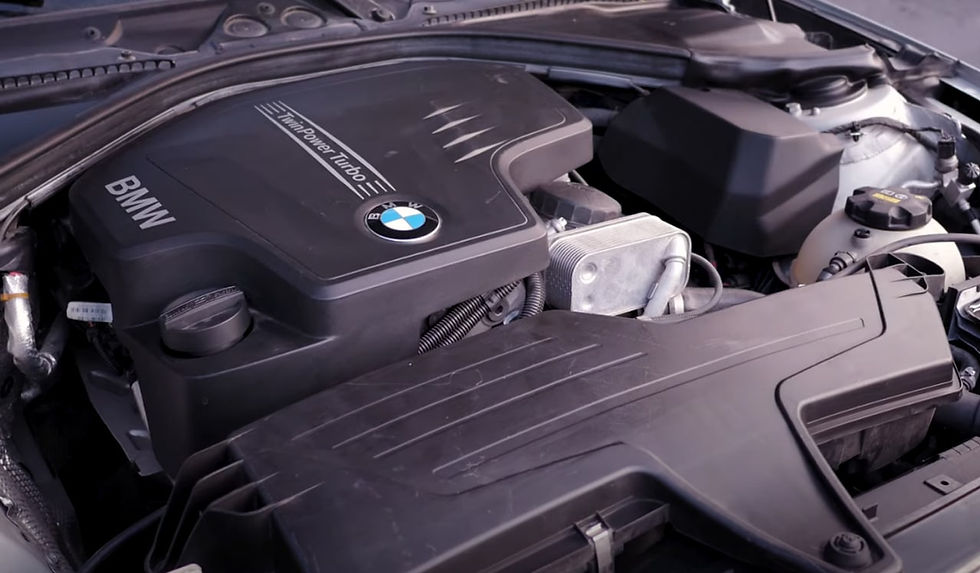Real! sores / review of the BMW N2O 2 liter TwinTurbo gasoline engine on the example of the F30 328i
- vselena4
- Jul 16, 2024
- 2 min read
The N20 engine is primarily installed in BMW F30 (320i and 328i), BMW F10 (520i and 528i), BMW X1, BMW F20/F21, and BMW F22.
Most commonly seen are the F30 and F10 models. The N20 engine has two versions: 20i and 28i. The 320i produces 184 hp, while the 328i produces 245 hp. The differences between them lie in different piston numbers, affecting the engine's efficiency, boost pressure, and power.
Major issues include crankshaft seizure. Like the N55 engine, it is possible to have gasket leaks in the heat exchanger at around 100,000 km.

A key characteristic of this engine is the need to replace the timing chain every 100,000 km. Often, customers come in with 110,000 km on the odometer, and all the plastic components are already in the oil pan. In this case, the plastic clogs the oil pickup and reduces oil pressure, potentially causing serious engine damage. When replacing the timing chain, two other problems are addressed: replacing the valve cover gasket and the oil pan gasket. The valve cover often cracks, leading to oil leaks.
Typically, we replace heat exchanger gaskets, timing chains, valve cover gaskets, oil pan gaskets, and spark plugs.

Regarding the fuel system, our clients do not encounter problems: injectors, high-pressure fuel pumps, and other pumps are reliable.
In terms of the turbocharging system, there is an issue with the wastegate valve, which wears out and starts rattling. We remove the turbo in its entirety and send it to the turbo service. There may also be issues with air leakage through the valve cover (CCV), which can be replaced separately. The air mass meter and turbo pressure regulator usually do not have issues. The charge air pipes to the intake manifold and intercooler also do not present problems. The Valvetronic system here is similar to the third-generation N55 engine and rarely breaks down.
Ignition system: the recommended mileage for replacing spark plugs is 60,000 km, and ignition coils may fail after 100,000 km.
Cooling system: the thermostat is the most common failure, and the water pump rarely fails, typically after 100,000 km. Hoses and the expansion tank are reliable, but the cap may break and should be replaced every two years. The coolant system includes a sandwich radiator setup: the cooling radiator, air conditioning radiator, and intercooler. Debris often clogs the space between the cooling radiator and air conditioner, causing coolant and engine temperature to rise, leading to rapid wear of rubber connections and gaskets. Therefore, annual cleaning of the radiator is recommended, preferably in spring or summer. Intercooler clogging affects the cooling of the intake air, leading to power loss.
Ancillary equipment: the alternator, air conditioning compressor, and electric power steering are reliable. The alternator belt and tensioner pulley should be replaced together every 100,000 km.
Summary of the engine: two main drawbacks:
Timing chain replacement every 100,000 km.
May seem underpowered compared to the N55 engine.
Main advantages: ancillary and electronic components, as well as parts, are reliable and do not break down, reducing maintenance costs.
We recommend the N20 engine to those who do not seek 400+ hp. We recommend purchasing a vehicle with the N20 engine!















Kommentare